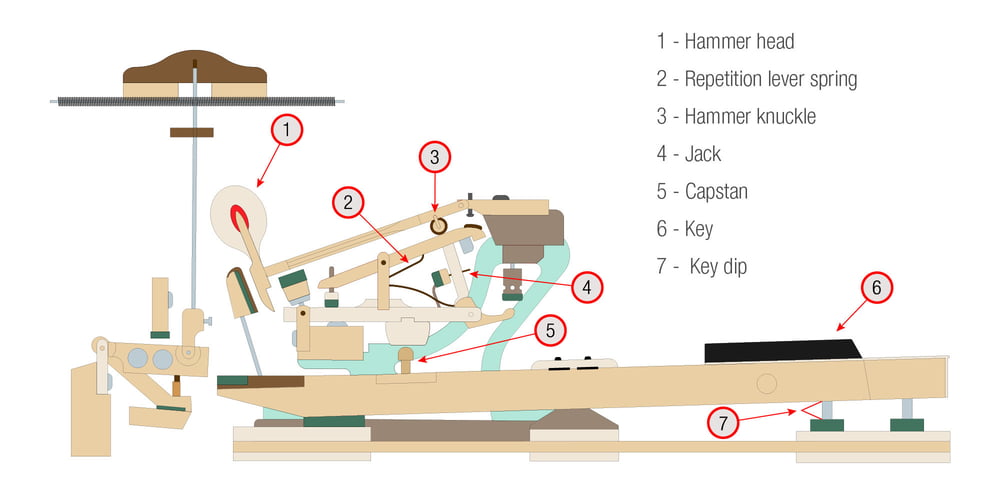3. Principles of Tone Generation
As already mentioned, what makes an upright and grand piano unique are their keyboards, the assignment of one tone to a string choir and sound made by striking the strings.
Pressing a key causes the hammer head, through the use of a capstan (Pilote below) and lifting mechanism, to either be pressed or flung against the string, depending on the type of strike. The ratio of the highest point a key reaches to lowest point and the maximum distance the hammer travels before striking the strings is called depth of play. The gear ratio of the mechanics is approximately 1:5, meaning that 1 mm key travel corresponds to 5 mm of hammer travel.

Modern repetition mechanics of a grand piano.
Play depths may vary slightly from instrument to instrument. A beginner will most likely not notice it and other criteria are more important at that stage, these will be discussed.
The main difference between an upright and grand piano is the position of the strings in the mechanics:
| While the strings are horizontal in a grand piano and the hammer's path runs from bottom to top, the strings and the mechanics of an upright are vertical and the hammer's path runs from back to front. |
Another essential difference is the location of the soundboard:
| On an upright the soundboard is behind the strings and the hammer mechanics, on a grand it is below. |



